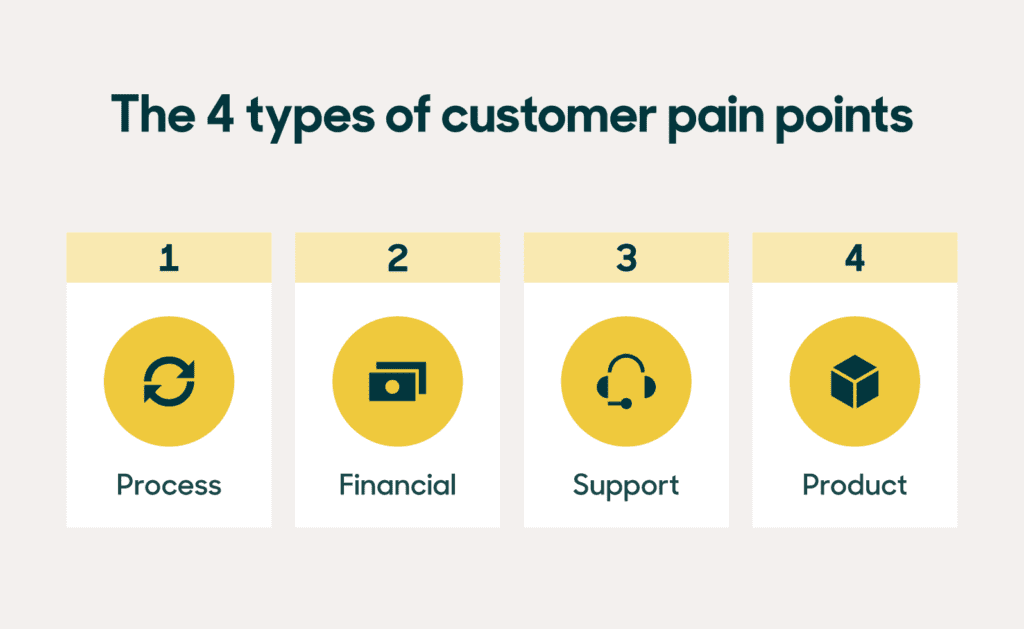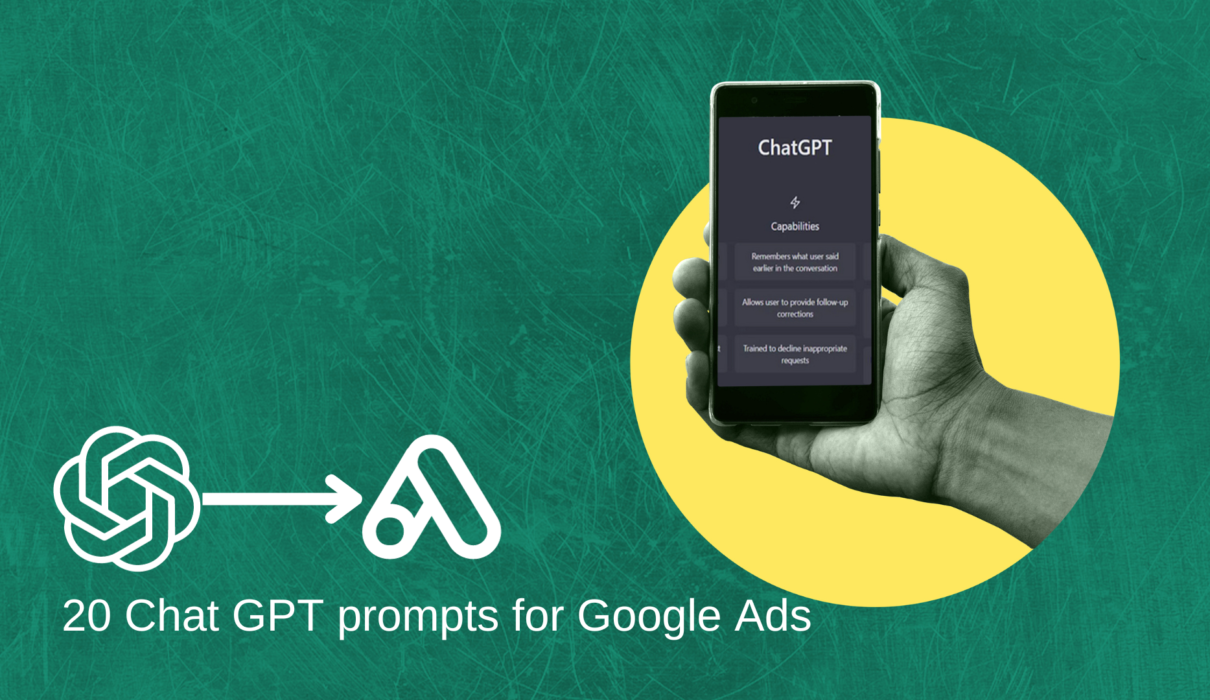ChatGPT for Google Ads can revolutionize your PPC workflow and maximize your results. ChatGPT has been designed to be user-friendly so anyone can get started quickly, plus they provide over 20 customizable chatbot prompts to make your campaigns shine.
Certainly! Crafting effective ad copies for Google Ads requires clear and compelling language to attract and engage potential customers. Here are 20 prompts that you can use to generate creative ad copy with ChatGPT:
- Highlight Unique Selling Proposition (USP):
“Generate an ad emphasizing our product/service’s unique features that set us apart from competitors.”

Developing a clear, stance-taking USP influences content, branding, messaging, and other marketing decisions in addition to helping you focus your marketing plan.
A compelling USP should be:
- Assertive, but defensible
- Focused on what your customers value
- More than a slogan
- Address Customer Pain Points:
“Create an ad that speaks directly to common challenges our customers face and how our solution solves them.”

“Listening to your customers is the best way to identify and treat their pain points. Customers are your bread and butter, whether they buy an end product or a service that helps them run their operations.”
- Promote Limited-Time Offers:

“Craft an ad copy that promotes a sense of urgency for a limited-time discount or promotion.”
Here are some examples of ad copies to promote limited-time offers:
- E-commerce (General)
- Tech Products
- Fitness Products
- Travel Services
- Food and Beverage
- Software/SAAS
- Fashion/Apparel
- Beauty Products
- Emphasize Quality and Trust:
“Develop ad text that underscores the quality and reliability of our product/service.”
The success and profitability of your brand can be determined by the quality of your products, but the final consumer ultimately determines what constitutes a quality product.
Here are five reasons product quality is important:
- It builds trust with your customers
- It produces a higher ROI
- It results in fewer customer complaints and returns
- People care about aesthetics
- It generates recommendations
- Feature Customer Testimonials:
“Generate an ad incorporating positive customer testimonials to build trust and credibility.”
Here are some:
- Video Testimonials
- Quote Testimonials
- Social Media Reviews
- Case Studies
- Interview-Based Testimonials
- Success Stories or Before-After Stories
- Blog Post Reviews
- Third-Party Reviews
- Focus on Benefits, Not Features:
“Create an ad highlighting the benefits customers will experience rather than just listing product features.”
Professionals often make the mistake of focusing solely on the features of their products or services instead of their benefits. The benefits of your product or service will ultimately motivate your customers to make a purchase. Features can help describe what your product is but features only go so far in describing what it is.
Emotions are what customers buy, not benefits, features, or advantages. That’s why you should show rather than tell your audience how your product or service benefits them rather than telling them about its features to effectively sell it.
- Target Specific Audience Segments:

“Craft ad copies tailored to different audience segments, focusing on their unique needs and preferences.”
The marketing industry often sorts people based on demographics, behavior, and where the buyer is in the buyer’s journey. Depending on the product or service you are delivering, you should use a different segmentation strategy.
- Include a Call to Action (CTA):
“Generate an ad with a clear and compelling call to action to encourage user engagement.”
Including a strong Call to Action (CTA) in your ad copies is crucial for prompting user engagement.
It’s important to tailor the CTAs to fit the specific action you want users to take and ensure they are clear, actionable, and aligned with your overall campaign goals.
- Use Dynamic Keywords:
“Create ad variations with dynamic keywords to increase relevance to users’ search queries.”
With Google Ads (previously Google AdWords) and other ad networks, you may tailor an advertisement to a searcher’s query using a function called dynamic keyword insertion (DKI). Using Dynamic keywords in ad copies can increase relevance and engagement by incorporating terms directly related to the user’s search.
Ensure that your advertising platform supports dynamic keyword insertion and that you set it up correctly. Dynamic keywords can enhance ad relevance and click-through rates by tailoring your message to the user’s specific search terms.
- Localize for Different Locations:
“Develop ad copies that are customized for specific geographic locations to enhance local relevance.”
Localizing your ad copies for different locations is a great way to connect with diverse audiences and make your message more relevant. Here are examples tailored to different locations:
- Local Services (e.g., Handyman, Cleaning – City Specific)
- E-commerce
- Local Technology Services (City or Region) etc…
Remember to replace the placeholders ([City], [Neighborhood], [Region], etc.) with the specific locations relevant to your campaign. This approach not only makes your ad copies more relatable but also shows your commitment to understanding and catering to the unique needs of each location.
- Adapt to Different Devices:
Adapting your ad copies to different devices is crucial in ensuring a seamless and effective user experience.
“Generate ad text variations optimized for different devices (desktop, mobile, tablet) to maximize performance.”
- Analyze your data
- Set your goals and budget
- Improve your keywords and ad copy
- Design your landing pages
- Track and measure your results
- Test and optimize your campaigns
12. Highlight Awards or Recognitions:
“Craft an ad emphasizing any awards, certifications, or industry recognition our product/service has received.”
Promoting awards or recognitions in your ad copies can significantly boost your brand’s credibility and showcase your commitment to excellence.
Make sure to prominently feature the specific award or recognition, and consider including any relevant details that showcase the significance of the achievement. Awards add a layer of trust and authority to your brand, helping you stand out in a competitive market.
13. Create Social Proof Ads:
“Develop ad copies that leverage social proof, such as user-generated content or social media mentions.”
Content that highlights positive aspects of your company, goods, or services—but not from an inside standpoint—is known as social proof. Rather, social evidence originates from outside sources such as clients, industry groups, influencers, and media sources.
One of the reasons social proof works so well is because of its source. Paid material does not sound like an advertisement, even when social proof is used. Rather, social proof presents itself as an unbiased view or an objective fact because that is exactly what it is.
14. Tell a Compelling Story:
“Generate an ad that tells a story, creating an emotional connection with the audience.”
Recognize your target. Your listeners are more likely to pay attention and retain your story if it is relatable to them.
- Determine your objective.
- Select your subject.
- Organize your narrative.
- Create compelling personas.
- Add colorful embellishments.
- Make things tense.
- Give instances.
15. Cross-Sell or Upsell:
“Craft ad copies that promote related products or encourage customers to upgrade for additional benefits.”

Cross Sell: “Suppose you work at a fast-food franchise. If you wanted to cross-sell, you would offer additional items for a complete meal.”
Upsell: “Upselling is encouraging customers to add enhancements, upgrades, or premium items to their additional purchases.”
16. Use Ad Extensions Effectively:
“Develop ad text that complements various ad extensions (site links, callouts) for a more comprehensive message.”
Gaining extra ad space is one of the primary advantages of ad extensions. You have more opportunities to interact with your clients and capture their attention the more ad space you have. You can also put pertinent details about your company, such as your website, phone number, and location, in the ad descriptions.
Types of Ad Extensions:
- Sitelink Extensions
- Callout Extensions
- Structured Snippet Extensions
- Image Extensions
- Call Extensions
- Location Extensions
17. Address Objections:
“Create an ad that anticipates and addresses common objections customers might have about our product/service.”
- Engage in active listening.
- Retell what you have heard.
- Recognize and validate your prospect’s worries.
- Ask additional questions.
- Make use of social proof.
- Decide on a precise time and day to follow up.
- Be prepared for sales objections.
The Most Common Sale Objection :
- Need
- Urgency
- Trust
- Money
18. Highlight Free Trials or Samples:
“Generate ad copies promoting free trials, samples, or demos to encourage user engagement.”
Promoting free trials or samples is an excellent way to encourage potential customers to try your product or service with minimal risk.
Remember to provide clear instructions on how customers can access the free trial or sample, and highlight any unique features or benefits they can experience during this trial period.
19. Focus on Local Events or Trends:
“Craft ad text that ties our product/service to local events or current trends to enhance relevance.”
Incorporating local events or trends into your ad copies can help your business connect with the community and stay relevant. Here are examples tailored to different types of businesses:
- Local Services (e.g., Handyman, Cleaning)
- Fitness Studio (Localized)
- Beauty Salon/Spa
- Local Technology Services
- Restaurant/Cafe
20. Create Interactive Ads:
“Develop an ad that encourages user interaction, such as polls, quizzes, or other engaging formats.”
Among its many advantages, interactive advertising helps firms tell stories, improve customization, and leave a lasting impact on viewers. Marketers across all industries can use it to:
- Create brand awareness
- Generate leads
- Boost revenue
- Gain customer insights
- Increase social sharing


